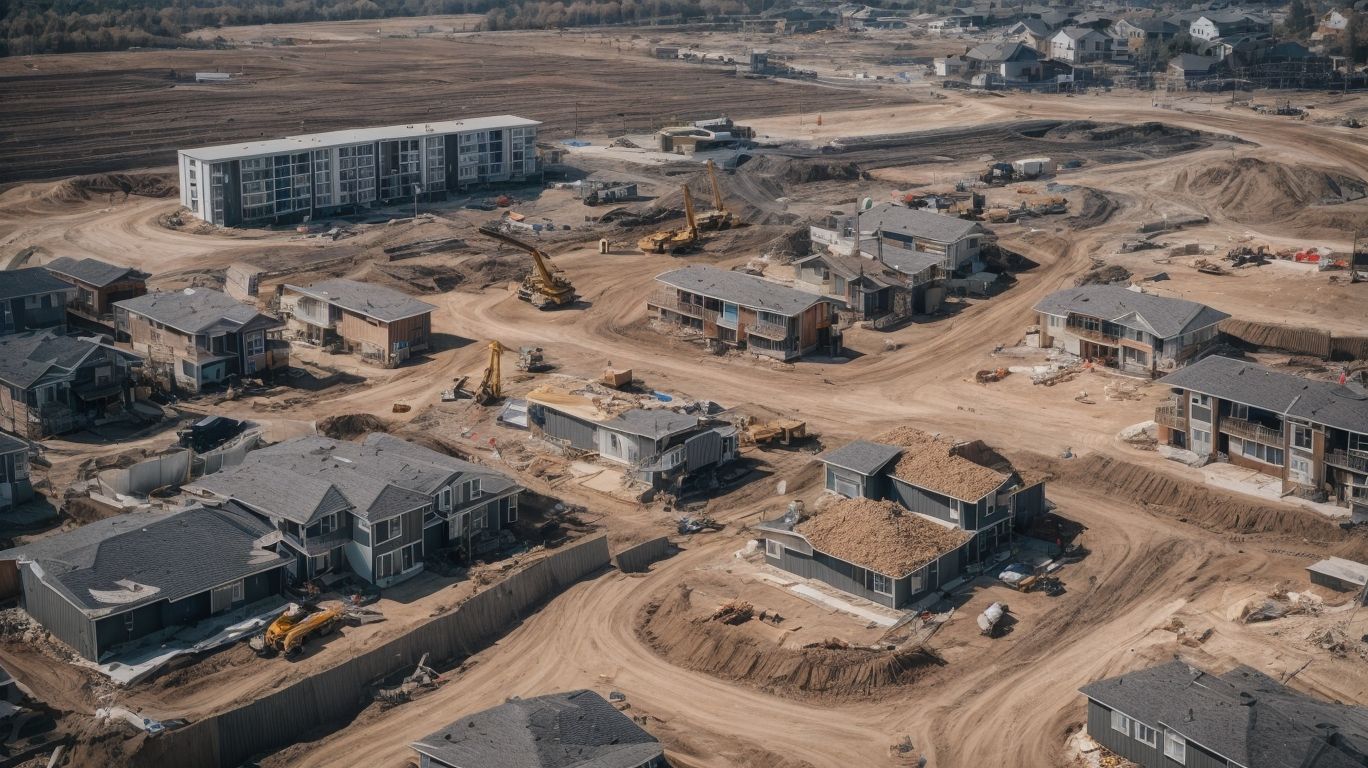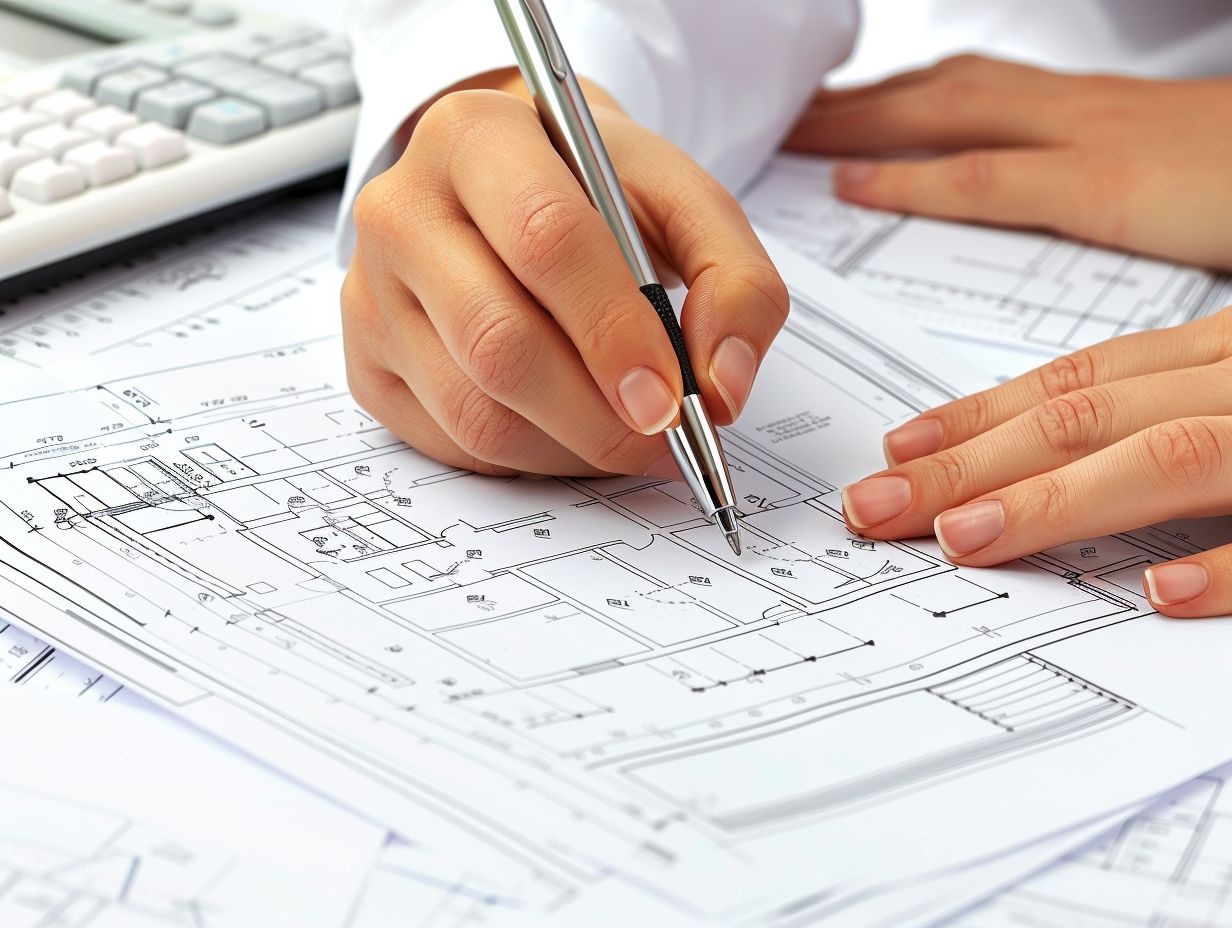
Bay Area Home Expansion: Engineering for Success
Are you considering expanding your home in the Bay Area? Home expansion can be a fantastic way to add living space, increase your property value, and customize your home to better suit your needs. Embarking on a home expansion project involves several crucial steps and considerations, and engineering plays a vital role in ensuring its success.
In this comprehensive guide, we will explore the concept of Bay Area home expansion, the importance of engineering in the process, the key steps involved in expansion projects, the benefits and challenges of expansion, and how to choose the right engineering firm for your project. Whether you are looking to accommodate a growing family, enhance your property’s value, or simply create a more functional living space, this article will provide you with valuable insights and essential information to help you make informed decisions.
From assessing your existing structure to navigating the complexities of permits and regulations, we will cover everything you need to know about home expansion in the Bay Area. So, if you are ready to explore the possibilities of expanding your home and maximizing its potential, let’s delve into the world of Bay Area home expansion and discover how engineering can be the key to your project’s success.
What Is Bay Area Home Expansion?
Bay Area home expansion refers to the process of modifying or enlarging a residential property in the Bay Area to create additional living space or improve its functionality and aesthetic appeal.
This trend of home expansion in the Bay Area is driven by the increasing demand for larger, more versatile living spaces. With the rising population and housing costs, many homeowners are opting to expand their existing homes instead of moving to bigger properties. This has created a surge in expansion projects, leading to a significant impact on property values.
Construction and design considerations such as sustainable materials, energy efficiency, and modern aesthetics play a crucial role in shaping the future of home expansion in the Bay Area.
Why Is Engineering Important for Bay Area Home Expansion?
Engineering plays a crucial role in Bay Area home expansion projects, ensuring compliance with regulations, maintaining structural integrity, and implementing sustainable design and construction practices to achieve successful outcomes.
It is imperative to enlist the expertise of professional engineers to navigate the complex web of building codes and zoning regulations, while also upholding safety and environmental considerations. Incorporating sustainable materials and energy-efficient systems not only aligns with modern construction trends but also contributes to long-term cost savings and environmental stewardship.
Effective project management, rooted in engineering principles, ensures that the expansion is seamlessly executed within the allocated timeline and budget, ultimately adding value to the property and enhancing the overall living experience for residents.
What Are The Steps Involved In Bay Area Home Expansion?
The process of Bay Area home expansion encompasses several key steps, including:
- Assessing the existing structure involves evaluating the available space, structural integrity, and potential impact on the surrounding environment.
- Creating a design plan, architectural considerations come into play, such as ensuring the expansion seamlessly integrates with the existing structure and adheres to aesthetic and functional requirements.
- Obtaining necessary permits involves navigating through local regulations and building codes, ensuring compliance at every stage.
- Executing construction, where skilled professionals bring the design plan to life with precision and quality craftsmanship.
- Completing finishing touches and inspections, marking the final stages to ensure that the expansion meets all safety and quality standards.
Assessing The Existing Structure
Assessing the existing structure is a critical phase in Bay Area home expansion, involving thorough engineering analysis, assessment of construction materials, and obtaining relevant building permits.
By conducting a comprehensive structural assessment, homeowners can ensure that the planned expansion conforms to engineering principles and local building codes. Material analysis plays a crucial role in selecting suitable construction materials that align with the existing structure while meeting durability and aesthetic requirements.
Securing the necessary permits is essential to ensure compliance with regulations and standards, emphasizing the importance of adhering to legal and safety parameters. Effective material selection takes into account factors such as environmental impact, cost, and long-term maintenance, contributing to the success of the expansion project.
Creating A Design Plan
Creating a design plan for Bay Area home expansion involves architectural and interior design considerations, focusing on space utilization, aesthetic enhancements, and the integration of sustainable design principles.
This process typically begins with a thorough assessment of the existing space and the desired expansion areas to determine the feasibility and potential challenges. Architects and interior designers work together to create a cohesive vision for the expanded home, taking into account the flow of spaces, natural lighting, and overall functionality. In addition, sustainable practices such as energy-efficient materials, passive heating and cooling strategies, and water conservation measures are integrated to promote eco-friendly living.
The comprehensive design plan also incorporates elements of modern and timeless design to ensure a harmonious blend with the existing home structure.
Obtaining Permits
Obtaining permits for Bay Area home expansion involves navigating zoning regulations, complying with property value considerations, and adhering to building codes and regulations to ensure the legal and structural integrity of the expansion project.
It can be a complex process as homeowners must take into account various factors such as the impact on property values, neighborhood aesthetics, and community regulations. Zoning regulations can dictate the permissible size and structure of the expansion, often requiring careful maneuvering to meet all the necessary criteria. Obtaining permits involves demonstrating adherence to building codes and regulations, ensuring that the expansion is not only aesthetically pleasing but also structurally sound and in compliance with safety standards. Failing to follow these guidelines can lead to delays, fines, and even project halts, making it crucial for homeowners to thoroughly understand and navigate the permit process.
Demolishing And Excavating
The phase of demolishing and excavating during Bay Area home expansion involves the strategic removal of existing structures and the utilization of modern construction technology and materials to prepare the site for the new addition.
This process begins with a thorough assessment of the existing structure to determine the safest and most efficient demolition plan. Modern construction technology, such as hydraulic excavators and breakers, is often used to carefully dismantle and remove buildings and other structures. The excavated materials, including concrete, wood, and metal, are typically sorted for recycling, contributing to environmental sustainability.
Modern construction techniques, like controlled demolition, ensure minimal disruption to the surrounding environment. Once demolition is completed, excavation and site grading are carefully executed to create a solid foundation for the new construction, leveraging modern surveying and earthmoving equipment for precision and accuracy.
Building The Addition
Building the addition in Bay Area home expansion involves executing the construction and renovation process while prioritizing energy efficiency and conducting rigorous testing of building materials to ensure quality and sustainability.
This phase of construction emphasizes the integration of energy-efficient practices, such as utilizing sustainable materials and implementing efficient insulation and lighting systems to reduce the environmental impact and lower long-term operational costs. As part of the renovation process, careful attention is given to the preservation of the existing structure while seamlessly blending the new addition with the original design.
Material testing plays a crucial role, ensuring that the construction complies with industry standards and adheres to sustainable building practices.
Finishing Touches And Inspections
Completing the finishing touches and inspections in Bay Area home expansion involves meticulous building inspections, adherence to construction practices, and effective project planning to ensure the successful completion and compliance of the expansion project.
This final phase is crucial in guaranteeing that every aspect of the expansion meets the required standards and specifications. The construction practices, such as ensuring structural integrity and proper installation of utilities, must be thoroughly examined. Detailed inspections are essential to identify and address any potential issues before the project is deemed complete.
Effective project planning plays a pivotal role in the seamless integration of the new expansion with the existing structure, ensuring a cohesive and functional outcome.”
What Are The Benefits Of Bay Area Home Expansion?
Bay Area home expansion offers numerous benefits, including increased living space, higher property value, customization options, and the potential to accommodate growing families, contributing to the enhancement of residential development and urban planning initiatives.
Expanding homes in the Bay Area not only provides extra room for families to grow and thrive, but it also has a positive impact on property values, boosting the overall appeal for prospective buyers. Interior architecture and customization play a significant role in creating personalized living spaces that cater to individual preferences, adding a unique dimension to residential development.
This trend towards expansion supports the evolution of urban planning by promoting sustainable, efficient use of space, and encouraging thoughtful community development.
Increased Living Space
The increased living space resulting from Bay Area home expansion allows for enhanced residential expansion and housing design, promoting efficient space utilization and contributing to sustainable development practices.
This expansion not only offers more room for families to grow and thrive but also supports the incorporation of green building practices, such as energy-efficient appliances and sustainable materials, further reducing the environmental impact of housing.
The additional space provides the flexibility for homeowners to create multi-functional areas, integrating elements of work, relaxation, and entertainment within their homes, enhancing overall livability and wellbeing.
Higher Property Value
Bay Area home expansion can significantly elevate property value, contributing to real estate growth, adherence to building standards, and the integration of energy-efficient technologies, enhancing the overall appeal and value of the property.
This elevation in property value due to home expansion stems from the increased living space, enhanced functionality, and improved aesthetic appeal, all of which are highly attractive to potential buyers and investors. As the demand for sustainable and energy-efficient homes continues to rise, properties with such features command a premium in the real estate market.
Home expansion also offers the opportunity to implement modern building standards and technologies, ensuring that the property meets current and future requirements, further bolstering its long-term value and attractiveness.
Customization Options
Bay Area home expansion provides extensive customization options, encompassing interior design, material selection, and the utilization of green building systems to align with sustainability practices and individual preferences.
This flexibility allows homeowners to tailor their spaces according to their unique tastes and lifestyle needs. They can choose from a variety of interior design options, ranging from modern and minimalist to cozy and traditional. The selection of materials spans from sustainable wood to recycled materials, promoting eco-friendly living. Integrating green building systems, such as solar panels and energy-efficient appliances, further enhances the sustainability aspect, reducing environmental impact while lowering energy costs.
Accommodating Growing Families
Bay Area home expansion addresses the need to accommodate growing families, contributing to residential property development, community growth, and the application of effective building design principles and construction methods to meet evolving housing demands.
This surge in demand for expanded homes not only reflects the changing needs of families but also reshapes the landscape of residential property development. It plays a crucial role in shaping the dynamics of communities, creating spaces that foster inclusivity and adaptability.
The implementation of effective building design principles and construction methods ensures that expanded homes not only meet the immediate housing needs but also contribute to sustainable and functional living spaces for the growing population. Home expansion is integral to meeting the evolving needs of modern families while enhancing the quality of residential properties and communities.
What Are The Challenges Of Bay Area Home Expansion?
Despite its benefits, Bay Area home expansion presents challenges such as:
- Cost considerations, which can be particularly challenging due to high material and labor costs, impacting the overall budget.
- Design limitations stemming from local zoning and building codes, which may restrict the extent of expansion, requiring creative solutions.
- Permit complexities, which add layers of bureaucracy, potentially causing delays and adding to project expenses.
- Efficiently managing construction timeframes, which becomes crucial to avoid disruptions and unforeseen expenses, demanding a well-coordinated approach.
Cost
The cost of Bay Area home expansion poses a significant challenge, requiring meticulous budgeting, effective construction management, and strategic development strategies to ensure successful project outcomes within defined financial parameters.
It is crucial for homeowners to carefully consider various cost elements when planning an expansion. By allocating resources efficiently and exploring cost-effective construction materials and methods, individuals can optimize their budget without compromising the quality of the project.
Construction management plays a vital role in overseeing expenses, scheduling, and quality control. Implementing effective development plans involves thorough research and leveraging innovative design and building techniques to achieve the desired expansion within the financial constraints.
Design Limitations
Design limitations in Bay Area home expansion necessitate comprehensive architectural drawings, strategic material selection, and a meticulous design process to overcome constraints and achieve the desired expansion outcomes.
This often involves working within existing structural frameworks, zoning regulations, and budgetary considerations to seamlessly integrate the new design with the existing space. The architectural drawings play a pivotal role in visualizing the proposed expansion, ensuring that every detail is accounted for, from spatial arrangements to structural integrity. Material selection becomes critical in optimizing durability, sustainability, and aesthetic coherence with the existing home.
The design process requires creative problem-solving to maximize the available space and address any technical or regulatory challenges efficiently.
Permits And Regulations
Navigating permits and regulations in Bay Area home expansion requires compliance with stringent zoning requirements, building regulations, and urban planning considerations to address legal and logistical complexities effectively.
These challenges can pose significant hurdles for homeowners seeking to expand their living spaces or upgrade their properties. Zoning obligations often dictate the type of structures and renovations allowed in specific areas, compelling homeowners to carefully plan their expansion projects to align with these regulations. Building regulations demand adherence to safety standards and environmental metrics, adding layers of complexity to any construction endeavor.
Urban planning dynamics, such as land use and neighborhood development, also play a crucial role in securing permits for home expansion, requiring thoughtful navigation of community interests and public policy goals.
Construction Timeframe
Managing the construction timeframe in Bay Area home expansion involves the utilization of advanced construction technology, efficient building systems, and optimized construction practices to meet project timelines and mitigate potential delays.
This often presents a significant challenge, particularly in an area like the Bay Area where construction regulations, access to skilled labor, and logistical constraints can impact project schedules.
Leveraging advanced project management software, such as Building Information Modeling (BIM) and scheduling programs, can help in coordinating various aspects of the construction process, ensuring seamless communication between different teams and stakeholders.
Adopting prefabrication techniques for certain building components can expedite the construction process and reduce on-site labor requirements, contributing to meeting the predetermined timelines.
How To Choose An Engineering Firm For Bay Area Home Expansion?
Selecting an engineering firm for Bay Area home expansion requires careful consideration of factors such as expertise, experience, project management capabilities, and the collaboration with skilled contractors and builders to ensure the successful execution of expansion plans.
It is essential to assess the engineering firm’s track record in delivering high-quality work within the specified budget and timeline. Effective communication and seamless collaboration with contractors and builders are crucial for streamlining the construction process.
Prioritize firms that have a proven ability to navigate complex zoning regulations and building codes in the Bay Area, ensuring compliance and minimizing potential delays. This collaborative approach fosters a cohesive team environment, leading to a smooth and efficient home expansion project.
Ensure that the engineering firm has the flexibility to accommodate changes and unforeseen challenges while maintaining a focus on delivering exceptional results.




No Comments